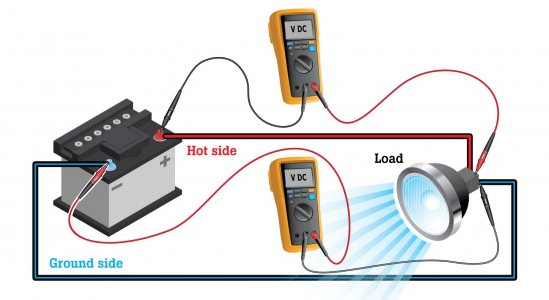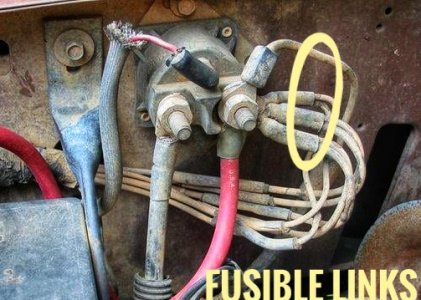Wishmeluck
Member
I have an 84' 351w Ive been working on and trying to get back on the road. Last week I went to put things back together and none of the dash lights would work, the blinkers dont work either but I could hear the flasher click for a short while, and the blower motor was intermittent. In all my searching I did find/replace a fried connector for the now new blower motor. Long story short I eventually decided to pull out a multimeter (two actually, to make sure the first one wasnt messed up) and test the fuse box to see where power was/wasnt. This is where it gets interesting...I pulled all the fuses and removed all the flashers and do-hicky's. Theres 12v+ to all the propper supply side terminals in the fuse box (not the interesting part). The load side of the terminals (interesting part)...When in the run position, a handful of the load side fuses register 5-6v in the morning, and the remaining register something under 1v. As the day wheres on and gets warmer the voltage drops with most of the load side fuses registering 0v and the ones registering 5-6v drop down to somewhere around .2-.5v. Then overnight the voltage magically goes back up to 5-6v and starts all over.
I have torn this thing apart and I can not for the life of me figure it out. I have taken the dash off and exposed wires. I chose to trace the brown/org blower motor wire and within a short 3' section, one end completely disconnected from everything just hanging there and the other connected to its own individual spot not touching anything in the fuse block, and it STILL registers 5-6v in the morning, as do a couple other load side fuse spots. Ive looked at wiring diagrams and they dont have any grounds in common and according to wiring diagrams the high voltage load sides are completely seperate circuits.
Things Ive done:
- disconnected every single connector I could find on the rig and cleaned any corrosion/dirt, checking for voltage changes as I went...didnt fix it.
- repaired/replaced any exposed wires...no change.
- disconnected all the ground connections, cleaned, and reattached...didnt fix it either.
- added additional grounds...frame to block, body to block, body to frame...no change.
Im stumped. As it sits right now the only connections are the battery, ingnition switch, fuse block (no fuses or do-hicky's though), and the gounds. And its doing the same thing. What am I missing???
I have torn this thing apart and I can not for the life of me figure it out. I have taken the dash off and exposed wires. I chose to trace the brown/org blower motor wire and within a short 3' section, one end completely disconnected from everything just hanging there and the other connected to its own individual spot not touching anything in the fuse block, and it STILL registers 5-6v in the morning, as do a couple other load side fuse spots. Ive looked at wiring diagrams and they dont have any grounds in common and according to wiring diagrams the high voltage load sides are completely seperate circuits.
Things Ive done:
- disconnected every single connector I could find on the rig and cleaned any corrosion/dirt, checking for voltage changes as I went...didnt fix it.
- repaired/replaced any exposed wires...no change.
- disconnected all the ground connections, cleaned, and reattached...didnt fix it either.
- added additional grounds...frame to block, body to block, body to frame...no change.
Im stumped. As it sits right now the only connections are the battery, ingnition switch, fuse block (no fuses or do-hicky's though), and the gounds. And its doing the same thing. What am I missing???
Last edited:


